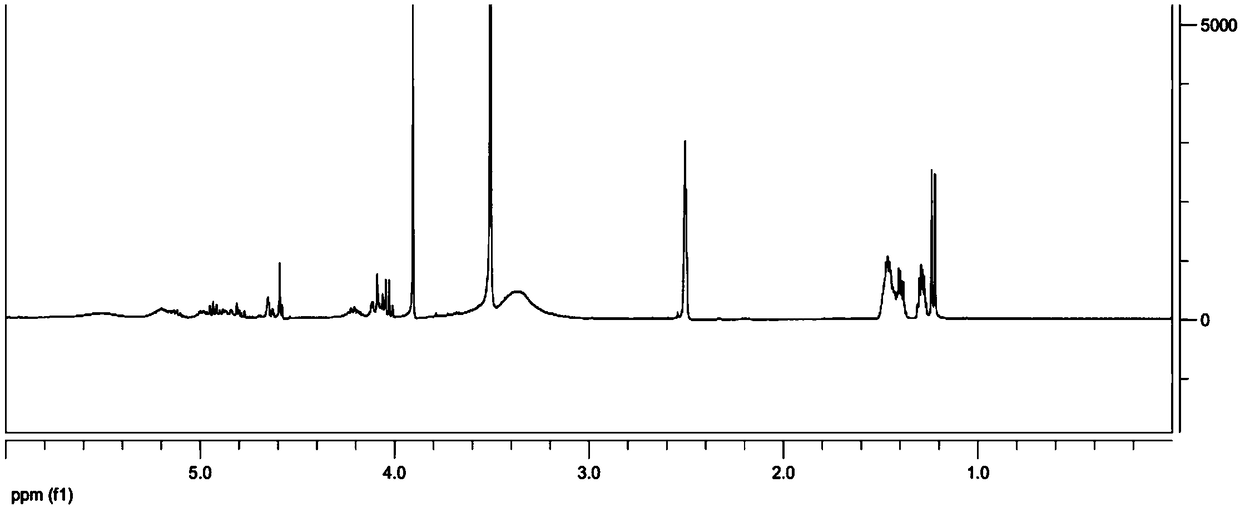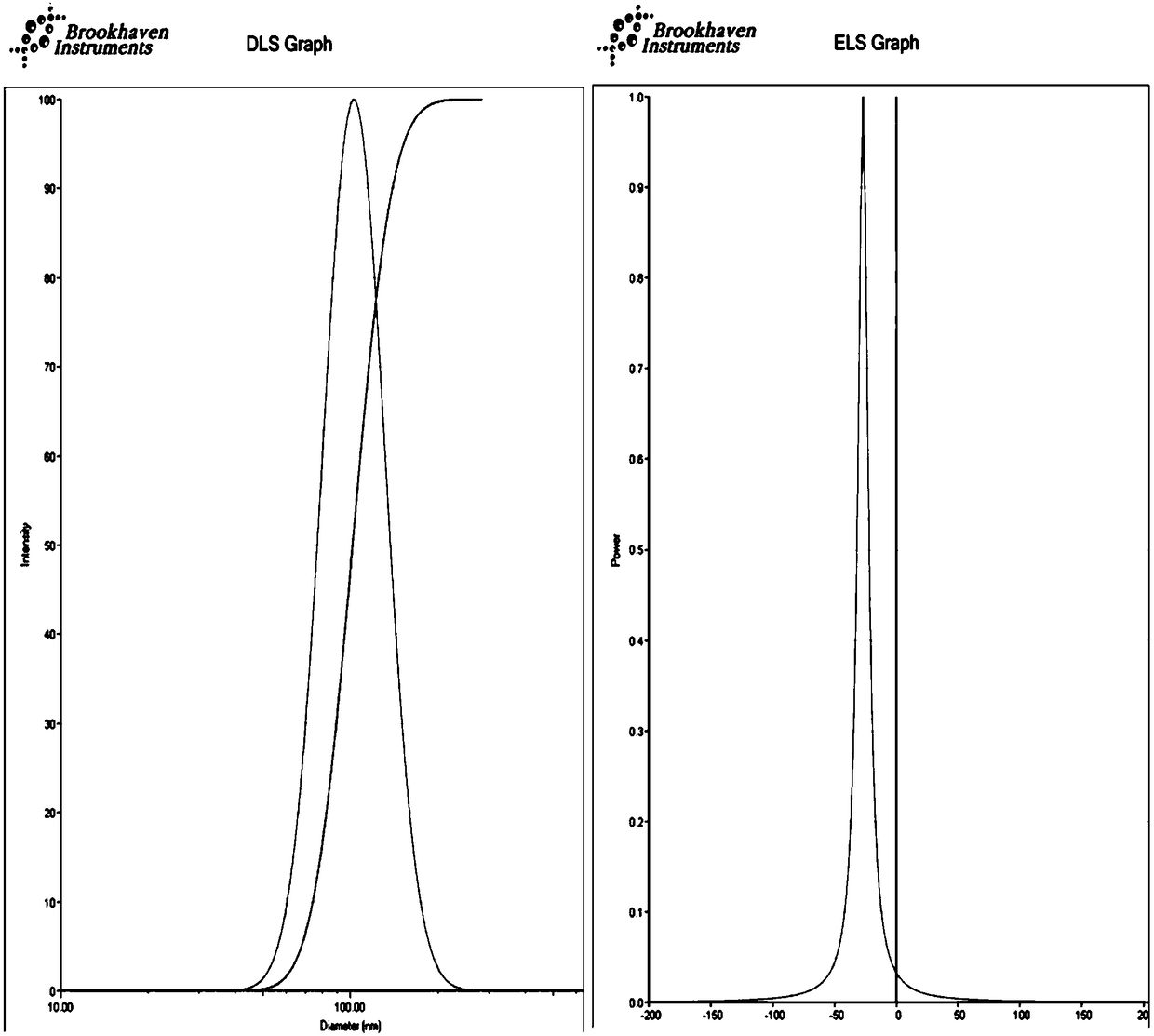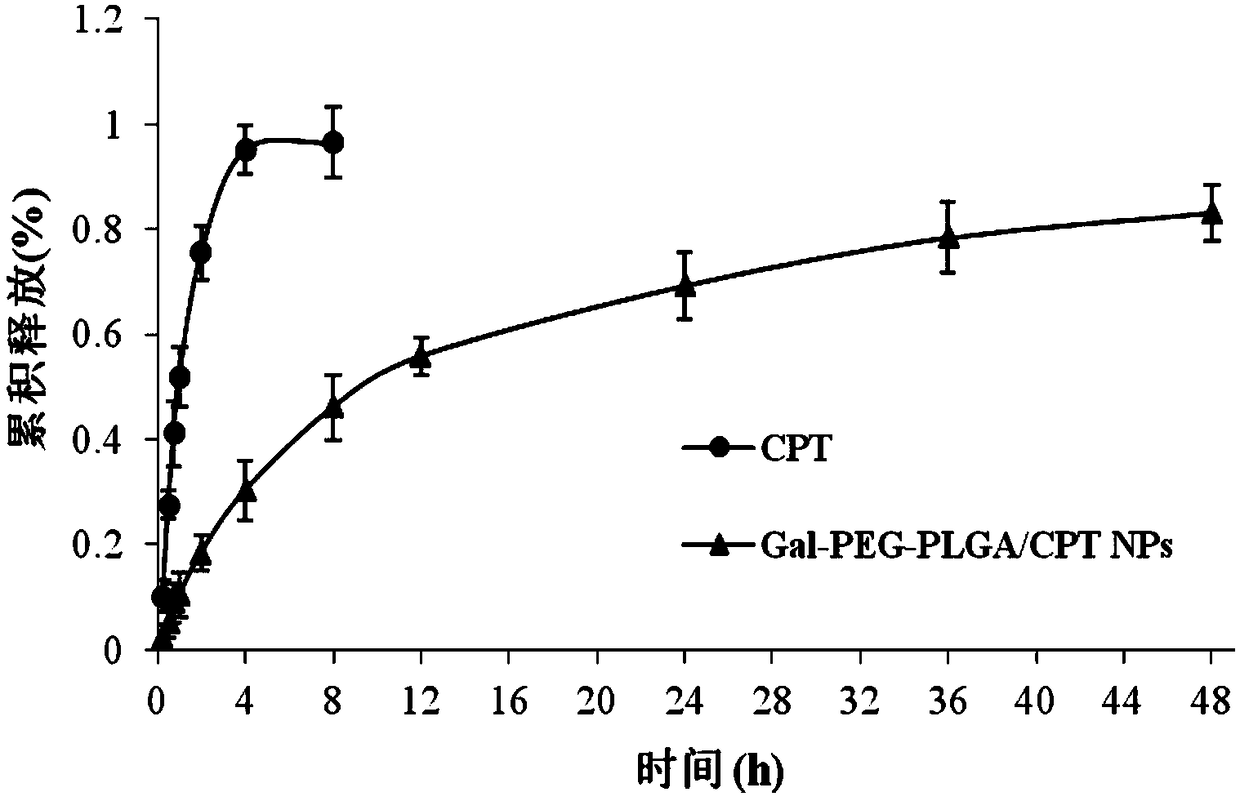Hepatoma-targeted nano medicine delivery system and preparation method and application thereof
A technology targeting nanoparticles and liver cancer, applied in the field of pharmacy, can solve the problems of non-target tissue-tropic drugs that are difficult to reach and poor stability, and achieve good stability and long circulation, and the effect of simple preparation process
- Summary
- Abstract
- Description
- Claims
- Application Information
AI Technical Summary
Problems solved by technology
Method used
Image
Examples
Embodiment 1
[0034] Materials Synthesis of Gal-PEG-PLGA. Weigh an appropriate amount of galactobionic acid, dissolve it in anhydrous dimethyl sulfoxide, add DCC and NHS in sequence, stir and react for 12 hours under nitrogen protection to activate the carboxyl group; then add amino-terminated PEG at both ends, and react for 12 hours to generate Gal-PEG. Weigh an appropriate amount of PLGA, dissolve in anhydrous DMSO, add DCC and NHS in sequence (the molar ratio of the two to PLGA is 1.2:1), protect with nitrogen, stir at room temperature for 12 hours to activate the carboxyl group; then transfer the reaction solution to the Gal-PEG reaction solution , the reaction was stirred at room temperature for 12 h to generate Gal-PEG-PLGA. After the reaction is completed, remove the precipitate by filtration with a microporous membrane, put the filtrate in a dialysis bag (Mw8000-14000), and dialyze with DMSO and distilled water in sequence to remove unreacted substances and solvents. Freeze-dry aft...
Embodiment 2
[0037] Preparation of nanoparticles:
[0038] Gal-PEG-PLGA-loaded camptothecin / 10-hydroxycamptothecin nanoparticles: Weigh 100 mg of Gal-PEG-PLGA polymer material in proportion and dissolve it in 5 mL of organic solvent, and weigh another anti-liver cancer drug camptothecin or 10 - Dissolve 10-100 mg of hydroxycamptothecin in 5-10 mL of organic solvent, and mix the two evenly. One of the preparation methods is to slowly add the mixed solution into a solution containing 1% polyvinyl alcohol under stirring, and continue to stir for a certain period of time in the dark to obtain nanoparticle suspension. Another preparation method is to transfer the mixed solution into a dialysis bag (MW 1500Da), dialyze to remove the organic solvent, freeze-dry the dialysate to obtain nanoparticles, dry and store at low temperature, and redissolve when needed.
[0039]In this embodiment, the materials used for polymer synthesis include galactobionic acid, polyethylene glycol (molecular weight: 2...
Embodiment 3
[0041] Characterization of Camptothecin / 10-Hydroxycamptothecin Nanoparticles Loaded on Gal-PEG-PLGA
[0042] The size and surface charge of the nanoparticles were determined using dynamic light scattering. Take an appropriate amount of nanoparticle suspension, dilute it appropriately with distilled water, and use NanoBrook 90Plus Zeta to measure the particle size and Zeta potential of nanoparticles. Such as figure 2 As shown, the particle size of the nanoparticles is about 140nm, and the Zeta potential is about -20mV.
[0043] The encapsulation efficiency and drug loading of Gal-PEG-PLGA-loaded camptothecin / 10-hydroxycamptothecin nanoparticles were determined by reverse dialysis. The encapsulation efficiency of the nanoparticles prepared by the above method is about 70%-85%, and the drug loading is about 15%-40%.
PUM
| Property | Measurement | Unit |
|---|---|---|
| molecular weight | aaaaa | aaaaa |
| encapsulation rate | aaaaa | aaaaa |
Abstract
Description
Claims
Application Information
 Login to View More
Login to View More - R&D Engineer
- R&D Manager
- IP Professional
- Industry Leading Data Capabilities
- Powerful AI technology
- Patent DNA Extraction
Browse by: Latest US Patents, China's latest patents, Technical Efficacy Thesaurus, Application Domain, Technology Topic, Popular Technical Reports.
© 2024 PatSnap. All rights reserved.Legal|Privacy policy|Modern Slavery Act Transparency Statement|Sitemap|About US| Contact US: help@patsnap.com










